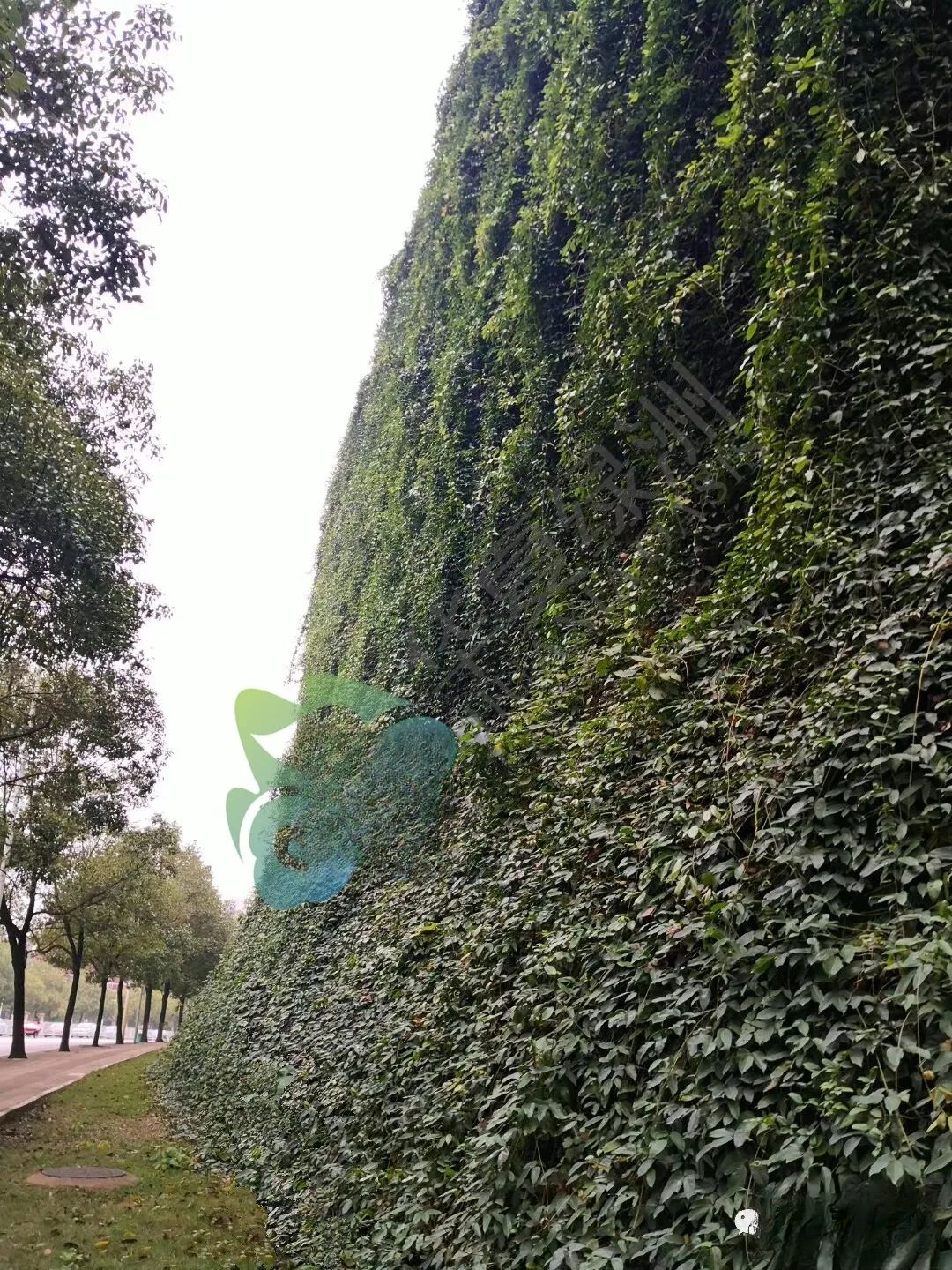Application of vines in slope greening
Lianas refer to plants with slender stems that cannot grow upright by themselves and must rely on other things to climb upwards. According to the texture of their stems, they are divided into herbaceous lianas (such as hyacinth beans, morning glories, kidney beans, etc.) and woody lianas. According to their climbing methods, there are twining lianas (such as wisteria, honeysuckle, and Polygonum multiflorum), adsorbing lianas (such as trumpet creepers, creepers, and quinquefolia), tendril lianas (such as loofahs, gourds, and grapes), and creeping lianas (such as roses, osmanthus fragrans, and climbing roses). As mentioned above, "climbing" means "climbing", which should be climbing plants. Such plants are called "lianas" because of their "climbing" characteristics, which is relative to trees and shrubs. Therefore, climbing plants, climbing plants, and lianas should be the same category, but with different names.
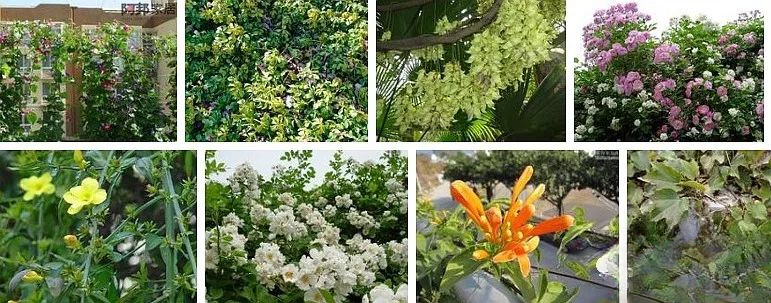
Nowadays, vines can make full use of their own climbing function in urban greening and beautification, increase green coverage, and play an important role in improving the ecological environment. For example, creepers and five-leaf brocade are widely used in the world, mainly used for vertical greening of building walls and trellis greening. In recent years, a large number of vines have been used in slope greening, soil and water conservation, and ecological restoration projects, which have solved many problems that have arisen in slope ecological management over the years. This shows that vines have a unique role in soil and water conservation for urban greening, mine ecological restoration, highway and railway slope greening, and water conservancy slope greening projects, and have a significant effect on improving and improving the ecological environment. As a ground cover slope habitat, vines have unique ecological and aesthetic effects and are increasingly valued in engineering projects. Not only do they have climbing characteristics such as adsorption, entanglement, tendrils or hooks, but they also have strong adaptability and fast growth. Choosing suitable species in different regions can quickly form ecological landscapes. Therefore, vines have become the preferred plants for slope greening and soil and water conservation.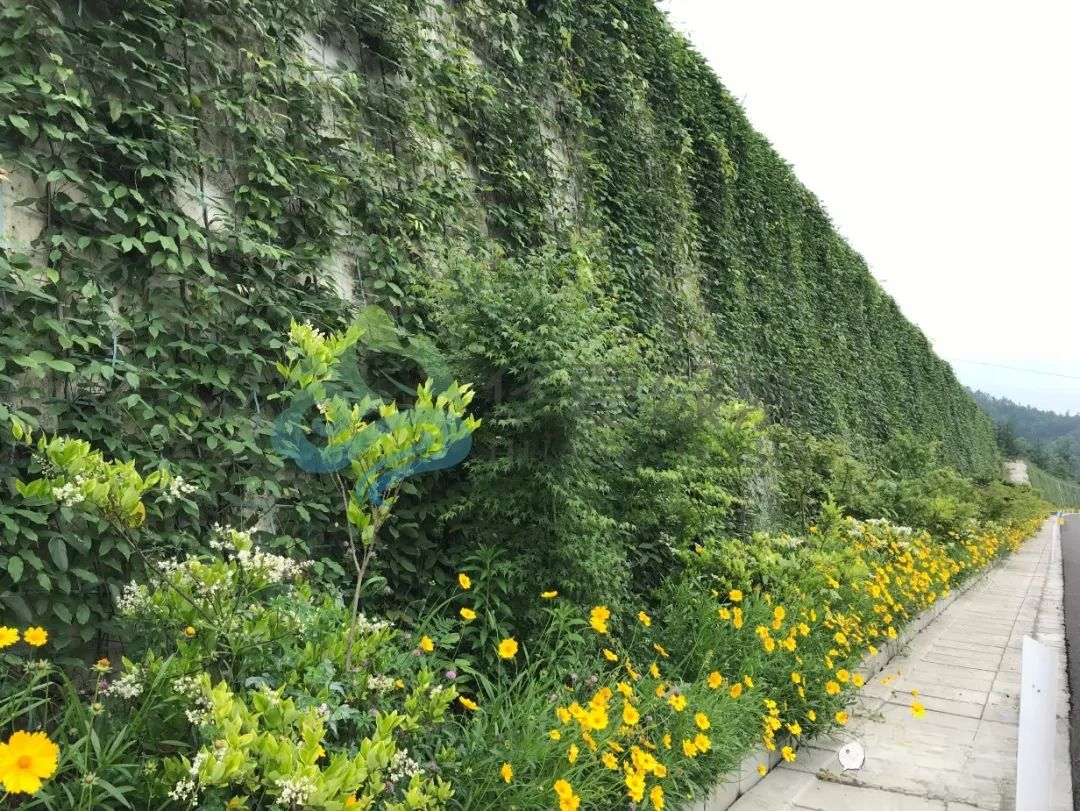
The construction and resource utilization of highway, railway, water conservancy, mining and other projects have led to the formation of a large number of different types of exposed slopes, devastating the original vegetation and animal habitats, and causing serious ecological and environmental problems such as soil erosion, landslides, and mudslides. Therefore, it is imperative to restore and rebuild the ecological vegetation on the exposed slopes and prevent soil erosion. However, the poor soil on the slopes, the threat of dry heat caused by high temperatures in summer, and the severe scouring of vegetation and slopes caused by rainfall have increased the difficulty of soil and water conservation and vegetation regreening, making the selection and application of plants more important. In the past, the traditional governance model of slopes often used the method of spraying to cover the surface of the slope to achieve the purpose of alleviating the direct scouring of the slope by rainwater and beautifying the slope. However, on steep slopes with a slope greater than 65°, the process of spraying and regreening has certain challenges. Even if there is a certain degree of flexible protective net reinforcement, rainwater will still gradually scour the slope soil, affecting the growth of plants in the later stage. However, the vines' unique strong suction cups or aerial roots are not afraid of the ravages of heavy rain, and the tightly intertwined branches and leaves covering the slope also act as a buffer.

Selection principles of vine plants in slope greening
There are many types of vines with different functions. To select excellent varieties that can survive on slopes with harsh ecological conditions and play a role in soil and water conservation, the following principles should be followed:
Strong resistance: Excavation during engineering construction has formed huge exposed slopes, which are prone to soil erosion and reduction of biodiversity. In addition, the excavation of the slopes has led to thin soil, large slopes, and diverse climate types. Therefore, the particularity of the site conditions must be considered. The vines used for slope greening must have strong resistance and adaptability; select varieties that are resistant to high temperature and drought, barrenness, have strong creeping ability, and are ornamental.
Fast growth and strong ecological function: Since the special site conditions of the slope are not conducive to the survival and development of vines, the vines used for slope protection and greening are required to have early germination, strong expansion, fast growth, deep and developed root systems, and strong slope-fixing ability, so that plant communities can be established quickly, the role of preventing soil erosion can be played as soon as possible, and the greening of the slope can be completed quickly to meet the needs of landscape and ecological protection functions;
Landscape: In addition to meeting the needs of ecological functions, slope greening should have a certain ornamental value. Selecting vines with long green period, varied leaf colors, bright flower or fruit colors, and long flowering and fruiting periods can effectively improve the landscape of the project area and meet the needs of improving the ecological landscape.
Emphasis on the selection of native vines: Select native wild vines or vines that are resistant to barrenness and drought and grow vigorously. When the coverage of local vines on the slope reaches more than 60%, some local nitrogen-fixing fast-growing plants can be sown to achieve the original ecological greening effect. Select native plants suitable for the local ecological environment. After long-term growth and domestication, native plants have the function of resisting changes in extreme climate factors, which can increase the survival rate of greening planting.

Slope planting method of vines
1. At the foot of the upper slope, set up planting troughs of a certain size where there is space inside the drainage ditch, fill the troughs with enough planting soil for vines to grow, and plant vines;
2. Floating platform (strip groove plate), with an angle of more than 70°, smooth slope, and lack of rock surface for soil attachment. Planting grooves with a certain longitudinal spacing are installed on the slope to create a space for fixed storage of planting soil and provide a growth environment for vines;
3. For planting by drilling, set a reasonable spacing on the slope, design the planting holes (the hole diameter and depth are determined according to the rock conditions), plant vines with nutritious planting soil, and consider the drainage of the planting holes in advance;
4. Constructing planting nests: Build a horizontal planting nest of a certain area in the depression of the slope, fix the outer edge with mortar, and the area depends on the terrain. At the same time, use rock gaps, irregular small platforms or micro-concave areas, and you can also combine vegetation bags or ecological bags with anchors to fix them), and then plant vines;
5. Climbing net: A fixed geotechnical climbing net is laid on the steep slope. The climbing net can promote plant growth. It means using active plants and combining engineering materials such as geosynthetics to build a self-growing protection system on the slope, and to protect the slope ecologically through the growth of plants.
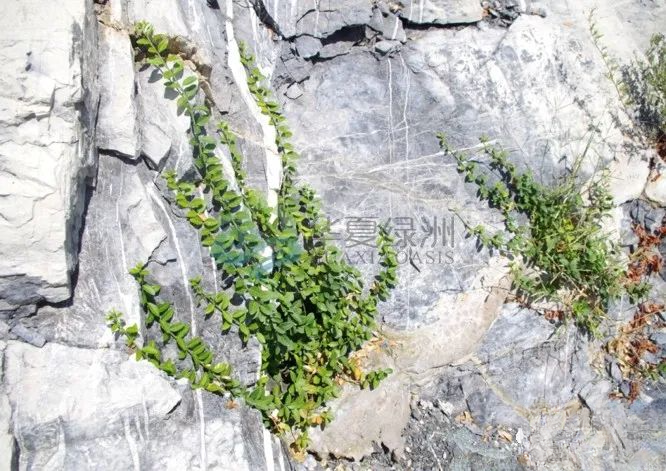
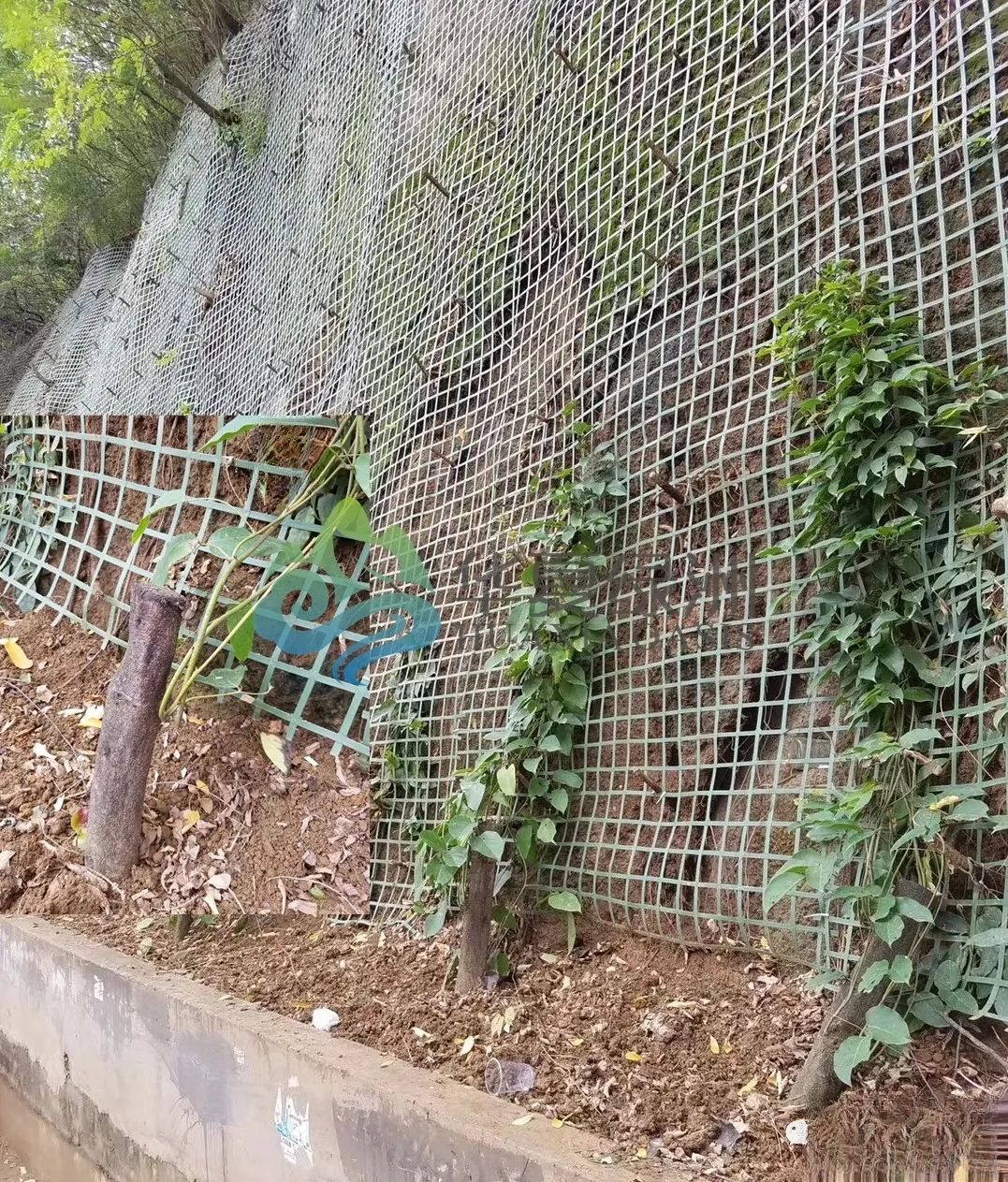
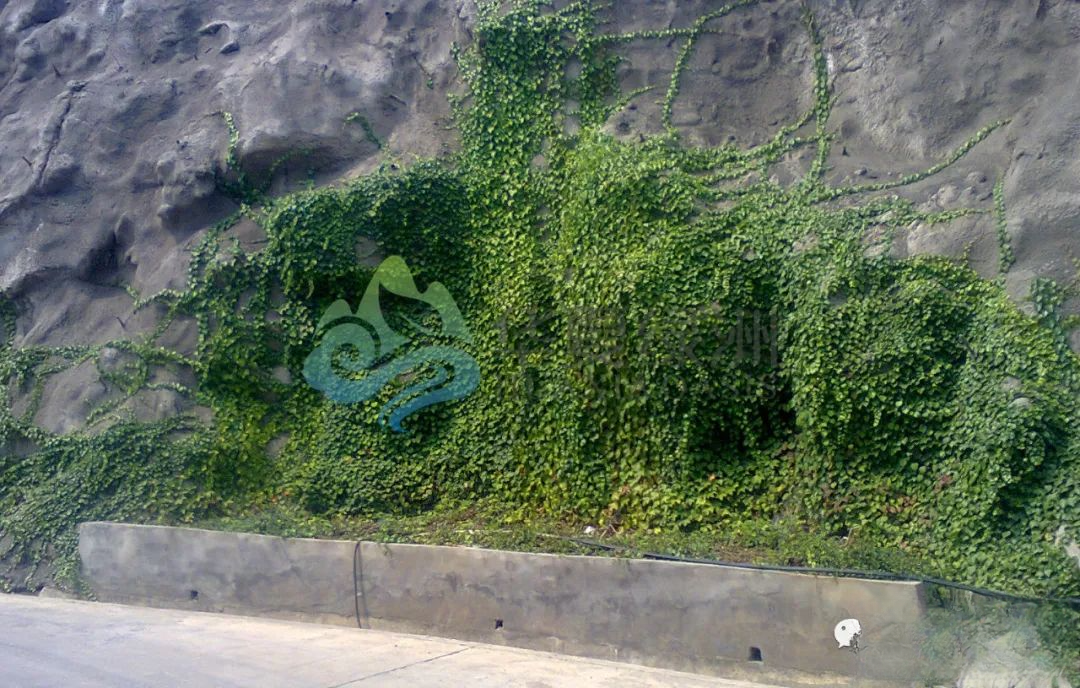
Summarize
Vines grow and reproduce quickly, are invasive, and can easily cause damage to native vegetation. Therefore, when planting, they must be combined with trees, shrubs, and grasses to achieve a balance between fast-growing and slow-growing plants and increase the biodiversity and stability of the group.
The climbing ability of vines needs to rely on some auxiliary facilities for traction. On some smooth stone slopes, some auxiliary facilities need to be added.
When choosing vines as covering materials, the starting point and design criteria should be to restore the slope vegetation and protect the ecological environment; various factors should be considered comprehensively, such as the natural environment, the human environment, etc. It is best to use native vines for better results.
When using vines in rock slope projects, the high temperature of 60 to 70 ℃ in summer will hinder the vines from climbing upward. Therefore, in the plant configuration, attention should be paid to the coordination with other trees, shrubs and grasses, and the shielding of other plants should be used cleverly. In addition, auxiliary measures such as pulling nets or building frames on the stone walls can be used to allow these plants to climb in all directions with the help of the frames, so that the slope can be quickly covered and the purpose of rapid greening can be achieved.
Some vines have extremely strong growth potential, such as chamomile and golden bell vine. Their strong invasiveness and strangling ability can cause ecological disasters. Therefore, the use of these pests should be avoided when selecting vines.

Although there are rich varieties of vines, research and development of high-quality vines is insufficient, especially vines suitable for slope greening need further screening, plant combinations are insufficient, and landscape effects are not given much consideration. The flora in the north and south are different, with more deciduous plants and fewer evergreen flowering and fruiting plants. In autumn and winter, only broken vines and branches are left, and the greening effect is poor.
